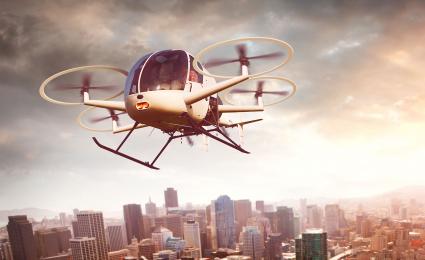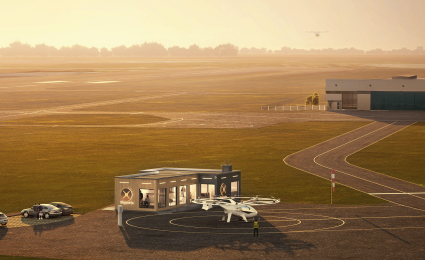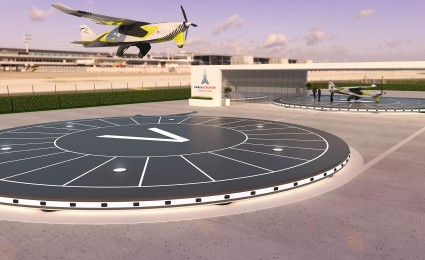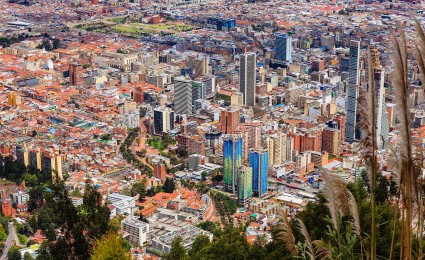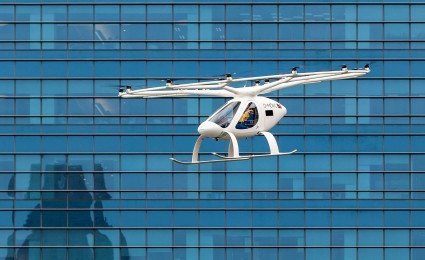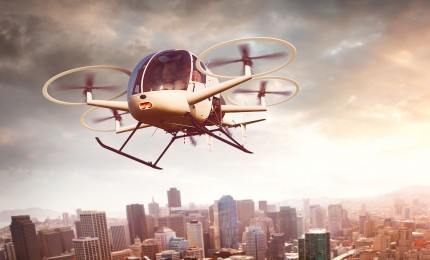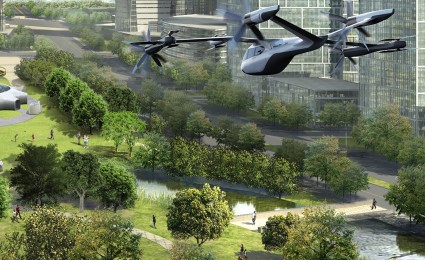Roland Berger advises the aerospace, defense and security industries. We support OEMs, suppliers, agencies and investors.


Urban Air Mobility: Shaping the future of mobility
By Stephan Baur and Manfred Hader
How Hyundai is positioning itself as a relevant player in the UAM market
When speaking of Hyundai, most people will think of the automotive OEM. However, Hyundai is more than a car company. It sees itself today as a Smart Mobility Solution Provider and is making a series of big bets and investments on the future of mobility, from autonomous driving to electrification and Mobility as a Service (MaaS). Earlier this year at the Consumer Electronics Show, Hyundai revealed its concept eVTOL air taxi in partnership with UBER Elevate. Read in our interview with Pamela Cohn, chief operating officer, Urban Air Mobility Division of Hyundai Motor Group, how she and her team will support Hyundai Motor Group’s vision to shape the future of mobility.
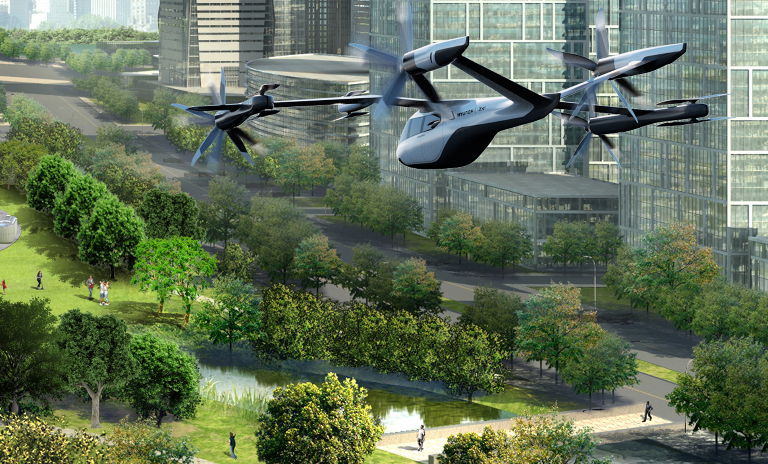
We want to start with a rather general question: In your view, in which direction is the whole UAM industry heading and how can you at Hyundai influence it?
At the moment, there are many different visions of UAM. What it means to whom, and what people want to see and expect from this nascent industry. The result is many different pathways companies can take.
There is a lot of common ground that needs to be worked out and agreed on, and no one organization can do it alone. UAM stakeholders are broad and diverse. Because of this, UAM requires more upfront cooperation among organizations compared to other industries. We need to align on a vision and principles that will guide the market development.
What excites us at Hyundai is the "democratized" version of flight: One that is truly accessible and equitable, and serves a broad and diverse range of communities in a meaningful way. For us, this means ensuring access to UAM early on, embedding the principle of equity in way we design our infrastructure networks, and adopting a human-centered design in everything we do (not just limited to our eVTOL vehicle). Hopefully this is the pathway industry will take to help meet the needs of communities around the world.
You have just talked about the democratized version of UAM – Are there other versions of UAM that could be implemented?
The most important thing to know is UAM needs to be affordable and accessible to communities everywhere if it is going to be successful.
There is a real risk that UAM becomes a niche, premium product if we are not thoughtful in how we proceed. The reality is, UAM will be a premium product in the beginning. But we’ve seen this before with other forms of new technology and gadgets, including smart phones, 4K TVs, and even personal computers, etc. As the technology and market progresses over time, we need to have a strong focus on bringing down vehicle and operating costs. Of course, volume will play a role in bringing down these costs, but that is only part of the battle. If we are not thoughtful and do not engage with the right partners and put cost as a central consideration of everything we do from day 1, we risk not making it down the cost curve.
During one of the webinars earlier this year, it was stated that Hyundai follows a second-mover approach when it comes to UAM. Does this go along with your view on a "democratized" version of UAM or what is the intention behind this approach?
We’re not in a rush to be first. We want to ensure a truly human-centered approach to our air vehicle. And for us, that means understanding market demands across different communities worldwide and then
developing tailored solutions
to address those demands. All that takes time.
We also want to ensure the market is ready for UAM. Everything needs to align perfectly at the right time – from vehicle development to critical infrastructure networks and public acceptance.
None of this happens overnight. It will take years and years of careful planning, community and stakeholder engagement and investment to make that happen. That is why we believe 2028 is a realistic timeline.
How do you ensure that the ecosystem is ready when you are? Do you engage in partnerships?
Partnerships are absolutely a cornerstone of our approach. I always tell my teams: opening the market for UAM is going to take a village – no one organization can do it alone. You have seen several of our early partnerships in the press lately: Uber Elevate, Urban Air Ports, Incheon Airport, etc. You can expect to see many more partnerships announced over the coming months and years.
As mentioned earlier, one of the big challenges in bringing the ecosystem together is that the stakeholder group is much broader and more diverse than we are used to in traditional aviation. Traditionally, OEMs need to work primarily with their regulators and the airlines. Today, that list is expanded to include state and local governments, infrastructure investors and developers, community interest groups, and stakeholders from other mobility modes, among many others. This means that there often isn’t a long history of working relationships between the key organizations to fall back on – leaving critical alignment and trust-building to be done.
But what about the missing dominant design – there are no established standards yet. Isn't that increasing difficulty levels?
This is indeed a large problem. We love the agile and innovative nature of this early stage market, where all ideas are equal in value, which promotes competition. But with over 280 different vehicle designs, the range of potential designs for the overall system and operating models, the supporting infrastructure, and other critical components of UAM is pretty significant.
Aligning on key principles, CONOPS, and standards is critical for the industry. That starts with aligning on the basic vision and values behind the system.
As an example, last month the World Economic Forum and City of Los Angeles released their Principles of the Urban Sky, which we helped develop. That is one of the first documents that tries to answer fundamental questions about what principles and values underpin our vision for UAM. I applaud the Mayor’s Office and WEF for their leadership.
By when do you expect the first human-piloted eVTOL operations?
The world will start to see early pilot operations in the mid-2020s. But meaningful UAM operations, where the broader public will have access, will take considerably longer. I expect that to start to happen in the late 2020s to early 2030s, and grow into a more robust system of transportation throughout the 2030s.
What about the issue of public acceptance: How can you build it? Is there a difference between the U.S., Europe and Asia?
UAM is a more intimate form of aviation than anything we’ve ever seen or experienced. More air vehicles will fly much closer to our homes and in much higher volumes than we see today – eventually even without a pilot. This requires an incredible amount of confidence and trust in the safety and security of the system. Our main job as an industry is to educate the public about UAM, and receive and incorporate their feedback in order to ensure the system, products, and services we deliver are truly designed to meet the needs of the communities they are meant to serve.
Regarding your second question, I believe public acceptance will look different city to city and across each region, depending on factors such as congestion, geography, topography, environmental concerns, workforce access, and current ground transportation infrastructure.
"Augmented Reality and Virtual Reality are going to be important tools in providing a meaningful educational experience for UAM."
What is the best approach to educate these people?
The best approach is a stepwise approach. It’s important to recognize that UAM isn’t a well-known concept beyond our industry. As a result, the first step is educating communities about the technology and the overall promise and experience of UAM.
After that, comes launching initial pilot operations, such as cargo, or – to demonstrate a clear public good – emergency and rescue services. This is important in demonstrating safety but also showing communities some of the compelling use cases UAM has to offer. It is also a critical opportunity to receive realistic feedback from communities on their perceptions of the technology so we as an industry can integrate and adapt accordingly.
Eventually the transition to passenger carrying missions will then be easier, based on the built-up confidence over time.
Which use cases are most relevant for passenger carrying missions?
At Hyundai, we see two primary UAM passenger missions. We colloquially refer to them as “long commute savior” and “airport to downtown.” Both use cases have significant value in both revenue and impact, but the specifics of each use case depend on the region/city. We also see a set of routes that connect neighboring cities in what we refer to as regional air mobility (RAM) – particularly in places like the US where rail is not ubiquitous. RAM has a small infrastructure footprint compared to rail, and can save passengers a significant amount of time.
Moving back to the overall picture: Why is an automotive OEM investing in UAM?
It all started with questioning the future of mobility, the future of cities, and the future of transportation. Hyundai knows society is changing. By 2050, 10 billion people will live on the planet, nearly 70 percent will live in cities.
That alone impacts the future of cities, mobility, and transportation. Importantly, we see this future as one requiring more innovative thinking and a truly intermodal approach.
Our goal is to offer integrated, seamless, intermodal mobility solutions to future communities and cities. Of course, autonomy and electrification on the ground are critical components to this vision, but equally as important is beginning to utilize and integrate the air domain into our everyday mobility ecosystem. I believe this approach makes Hyundai unique.
Auto OEMs have a unique value proposition in the UAM market. If UAM is to evolve into the market that is envisioned for it today, it will require significantly higher volume and lower cost production of the air vehicles. Something traditional aerospace has always struggled with, but automotive is leading the way on. As a result, there is a powerful role automotive can play in cracking the code on the affordability and high-rate production challenges underpinning the business case for UAM. I believe this is a compelling value proposition for auto OEMs looking at the market.
Sounds convincing! Any ideas, why other players are not following your approach?
Being very candid: UAM is a big bet. It will take a lot of money and patience to be successful. Auto OEMs, and all legacy mobility players for that matter, have a large slate of potential bets they can place on the future of mobility and how they want to craft their role in it.
As other organizations evaluate the options of where to place their money and how to evolve their identity in the changing mobility ecosystem, some may choose to make UAM a focus, while others may choose to double-down on technologies, products, and services more familiar to their core business today.
It’s a matter of how management at other organizations view the potential of this market, as well as their specific identity and potential role to play in it.
So what keeps you awake at night: Another automotive OEM, aerospace OEMs such as Boeing and Airbus or even new entrants/startups?
All three, really. They’re all developing amazing new technologies and each has their unique strengths.
For example, startups are more "fearless" and operate in an agile manner. Aerospace companies, however, know and have what it takes to certify an aircraft. Automotive players have experience in bringing down costs and scaling up manufacturing.
All three of them are distinctly important for the UAM market to develop. I’d like to think we have the benefit of all three. The UAM division is a startup inside of Hyundai, we have an aviation leadership team with deep expertise, and a leading automotive company behind us to support our manufacturing strategy. But then again – I’m biased.
Does it make sense then to go all the way alone, or is a partnership-based approach better?
In my opinion, there is no way to go it alone in this market. As we discussed previously, it is going to take a true village to bring this market to life.
We have a robust and growing partnerships team focused on developing meaningful, long-term partnerships across the areas of the value chain where we see value in partnering. Of course, there will always be areas where partnerships won’t make sense, or where there will be compelling business reasons to stay more internally-focused. However, I believe that a partnerships-based approach will be critical to success in this industry.
"If anything, I believe COVID-19 has shown the importance and fragility of the global mobility system and highlighted how critical it is to create a sustainable and resilient mobility system for the future. These are all considerations we are being thoughtful about as we chart our path forward."
Thanks for the great insights so far! One topic which was discussed during the last months was of course COVID-19. What is your view on the impact of COVID-19 on UAM?
Even though we are still in the early days of the market, COVID-19 has sparked important strategic reflections. The pandemic drove a wide-spread behavior change around the world and made us refocus and rethink how we live our lives, and how we get around. Limited mobility was an important part of that.
Regarding its immediate impact, financing has affected many different players in the market, both startups and legacy OEMs. Cash positions have been challenged, with aerospace and aviation being some of the hardest hit industries. As a result, I think we are now entering a phase of consolidation, where you will see some M&A activity and important exits from the industry. The challenge with this will obviously be how significant the cooling effect is on critical development, with the upside being the opportunity for better market and vision alignment through consolidation.
Last question for today: Going forward, what are your next big topics?
There are three big external topics that are immediately top of mind for me right now. The first is finding the right partners across the ecosystem to form our “village” that will lay the groundwork for UAM. The second is working to finding the best way to integrate our UAM services in an intermodal context to ensure it isn't an isolated form of transport, and can truly provide that unique, seamless passenger experience to customers.
The third and final big topic is how to ensure access for all communities. How do we ensure equity in the way we design our vehicles and infrastructure and where we place our networks and embed them into the urban context? We have exciting times ahead.




